|
I LOVE coffee! It’s a pleasure from the preparing, the pouring, the aroma and that first blissful mouthful. At university, I was an easy ‘10 cup of (instant) coffee a day’ kind of girl. The result was a weak bladder made weaker! Dehydration (but I was young, so didn’t clock the dry skin and smelly breath), I was dog-tired and my mind scattered.
So what are the (literal) ups and downs of coffee, all of which stem from its caffeine content? Coffee is one of the worlds most commonly consumed substances. Its ‘psychoactive’, which means it can change brain function. How you ask? Caffeine is quickly absorbed into the bloodstream and crosses the blood/brain barrier where is blocks the neurotransmitter adenosine, the drowsy and sleep invoking hormone (like fitting a key into a lock and leaving it there). This allows for other neurotransmitters to increase their movement, specifically stimulating norepinephrine and dopamine. These elevate the brain’s function in areas of memory, mood, vigilance, energy and reactions times (sports and energy drinks include caffeine for this result). That’s why your first cup of coffee has that mental and physical ‘zing’. It also elevates the stress hormone cortisol. If you work well with stress, thrive on it to get things done, coffee is the perfect partner! So what’s the payback of drinking coffee in excess? In the background the nervous system is still producing adenosine and stockpiling it … remember, adenosine is the neurotransmitter that naturally makes us tired. When the caffeine wears off we are still confronted with our body’s load of adenosine. This makes us feel lethargic and at times down right exhausted. (“Time for a 2pm coffee?” just a little pick me up?). The effects of caffeine on the nervous system can last between 4 to 6 hours, for more sensitive people it can be longer. This zombie-like-after-life inhibits sleep and keeps the mind in alert. Coffee is a diuretic; it can produce frequent and excessive urination. This leads to dehydration and (with chronic dehydration) constipation. With the brain being approximately 80% fluid, dehydration causes headaches, brain fog and moodiness, even stress-induced temper. Caffeine hampers magnesium absorption. Magnesium is already a mineral lacking in our soil and therefore our food chain. Magnesium is used for cellular energy, muscular contractions, bowel regularity, cardiovascular health and wound healing. Coffee has significant affects on the digestive system. As a plus, caffeine stimulates the production of hydrochloric acid in the stomach alleviating low stomach acid conditions. If you are one of these people, coffee is helpful. But … most of us have over acidic systems produced by stress hormones, dehydration, excessive meat, alcohol, sugar and fatigue. Caffeine does stimulate the gall bladder to release bile and so aiding the liver. However, this process is better achieved as a coffee enema as vs. a cuppa / rectal as vs. oral. The conclusion is moderation. Coffee, like all tools should be used thoughtfully. It is still my morning wake up call. It is also my 10am ‘coffee time’ pleasure. I sit, I savour and I take my moment with one of my oldest friends. But there are alternatives; peppermint tea for focus, chamomile for calm, fennel for digestion, sage for memory and my new favourite, rooibos, a soothing anti-inflammatory.
1 Comment
We all know about vegetable super foods, the kale, the broccoli, the garlic, but what happens when we create a fermented combination and why is it so good for us? Traditional fermentation, pickling and preserving, were away of storing food for the winter when fresh produce was limited. (Something, our grandparents and great grandparents would have done to feed the family, control the budget and to use the summer and autumn glut of vegetables and fruit). But the secret that is starting to emerge is that fermented food is The new category of superfood. What does this mean? Fermented foods have undergone a process of lacto-fermentation, which means that natural bacteria have fed on the sugar and starch in the food creating lactic acid. This ‘good’ bacteria populates the gut and improves digestion, just like a good quality pro-biotic source. Furthermore, to add to its star quality, by fermenting food the nutrients are retained, new enzymes are introduced to the gastrointestinal tract to aid nutrient absorption AND the food is already partially broken down making it easy to digest. Examples of fermented foods are many and varied, cottage cheese and yoghurt. Non-diary options are miso, soy sauce and tempeh, while the most commonly known vegetables are the German sauerkraut and Korean kimchi. But, beware not all fermented foods are created equally. Most shop bought items do not retain there fermented qualities as they’ve been pickled in low grade vinegar instead of a high grade brine. An alternative is to make your own – use it as a side dish, a garnish, as a salsa or a snack. Here is my fermented vegetable recipe. Have fun with this and get creative with your vegetables colours and jars. Colourful Fermented Jars
Choose your vegetables - carrots, cabbage, peppers, kale, chard, seaweed, broccoli, onion, beetroot … anything. Grate, shred or chop these. Create a brine – juice celery &/or leeks, enough to cover your vegetable combination. (Celery & leeks contain natural sodium and will anaerobically preserve your vegetables and encourage the growth of ‘good’ bacteria). Fill your jar – put your vegetables in a glass jar. Optional flavour - add rosemary, garlic or slice of lemon. Cover with the brine, to the brim. Cover this with a cabbage leaf (or chard leaf). Seal the jar with a lid. Fermentation – place the jar/s in a warm place for 2-4 days. I use my hot-water cupboard. Alternatively, a cool box with warm water in the bottom. Approximately 20-24 degrees. Store – refrigerate and enjoy.  I love Christmas. The smells, the wrapping, the unwrapping, the telephone calls around the world and the food with all the trimmings. Every family has their traditions and what they traditionally eat. Often this takes its toll on our digestive systems and by Christmas afternoon everyone over 12 needs a nap or at least a lie down. I have five easy tricks up my sleeve that will see you through the Christmas joys and excesses with an intact digestive system and energy to burn.
Merry Christmas Everyone and go happily into 2019.  Your immune system is your body’s first line of defence, especially as the colder seasons approach. Most people imagine the immune system to be made up of an army of white blood cells, which go into battle when bacteria or viruses ‘invade’. However, your whole body is effectively your immune system. Your skin, your digestive tract, your stomach acid, your lymphatic system, the hairs in your nose and ears … and, yes your leucocytes, the fighting white blood cells. There is no doubt that autumn and the return to school and work brings a cacophony of illnesses; colds and flu’s, stomach bugs and chest infections. To support our immunity we need to consume zinc-rich foods, like green beans, kale, spinach, chard, brussels sprouts and uber zinc packed pumpkin seeds. Roast them, don’t waste them. But the true STARS of autumn and winter are the alliums, most importantly, the humble onion and garlic. In there organic form they are packed tightly with anti -inflammatory phytonutrients and flavonoids, these detoxify, are highly anti-inflammatory and work as natural antibiotics for colds and flu’s. Onions hold there qualities when cooked (unlike many other vegetables where phytonutrients are leached out during cooking), while garlic is better used raw! Instead of cooking your onion and garlic together at the start of a dish, leave your garlic until last, use a garlic press and squeeze it into your soups, stroganoffs and casseroles. The flavour is just as rewarding and the benefits are far more medicinal. My family are prone to winter coughs so I’m including our cough medicine recipe, this tastes much better than pharmacy bought syrups and you know exactly what is in it, definitely no preservatives! Onion & Honey Cough Medicine 1 organic onion Raw runny honey – to cover An airtight jar Optional - sliced or grated ginger, sliced or crushed garlic Slice your onion into rings (plus optional extras). Put these into the jar. Cover with raw honey. Seal the jar tightly. Leave at room temperature over night. Dosage: 1-2 tsp hourly or as required. This cough medicine will last for 3 days. It has a strong smell and a sweet taste. Enjoy the autumn and the winding down this season brings, but support your immune system so bacteria and virus’ have no place in your body to manifest into nasty illnesses. You’re moving fast, you’re juggling family, work, home, possibly a pet and a social life. Your aim – to keep everything going and to have ‘a perfect life’. Behind being the perfect parent, partner, friend, colleague and the beautiful home – are you feeling overwhelmed and anxious? Is your mind so full of ‘the next thing’ that ‘now’ is missed?
Most of us recognise this picture. And the question is – can we have it all AND feel good? Yes, you can. But do it differently. Lets start simply. Is perfect so important? Is happiness more important? Lets look at the idea of mind, body, soul and reverse it to Soul, Body, Mind. Lets keep it easy. Soul - do something for your soul that is about joy. By this I mean, be in the Nature, be in or beside a natural body of water, play with your children, hold hands with your partner, pick up your musical instrument, sing, dance. Not because you must, but because this sense of Joy medicates your Soul, which immediately changes your level of happiness. The platform you view life from is not a race, but about feeling happy moments, so happy you hum. Body – hear your body’s cry for water. Dehydration pushes the body into a feeling of stress. Stress boosts dehydration. This cycle pushes the body into a constant feeling of flight or fight where the adrenals are working over time to keep the body’s equilibrium. By hydrating with water and reducing dehydrating diuretics (black tea, coffee, soda drinks, alcohol), stress-balance is addressed and mental focus is better. Vitamin B, particularly B5, soothes the adrenals and therefore stress. All fresh fruit and vegetables have Vitamin B, particularly green leafy vegetables and mushrooms, as does salmon, red meat and eggs. Mind – you are one thought away from change. When your head is full of chaos or negativity, flick the switch, there is order and positivity. For everything you don’t ‘have’, see what you ‘have’. For every lost opportunity, see the gained opportunity. The people you miss, see the people you have. See your perfections as vs. imperfections. To take away – treat your Soul, Body & Mind well. Give yourself space to feel, think and choose. Medicate with joy. Feed and water your body appropriately. Flick the mental switch. You are one thought away from changing your thinking. This is one form of vibrational medicine. This is changing your vibration and having it all. Picture - beside the sea with these two. Magic and Magic. xPaula Our daily lives are filled with chemicals, some we know off and others we don’t. We are well versed in the terms car emissions, greenhouse gases, BPA plastics, chlorinated water, processed food, genetically modified food and industrial cleaners ... pretty daunting! But lets take it back to basics. Lets start in our homes and make gentle changes that lower our toxic load and increase our well-being. Lets look at what we eat, the products we use and the plants we have.
Ever solution driven, what can we do to reduce our chemical load? Food, eat as organically and/or spray free as possible. The chemicals used in animal rearing (antibiotics, steroids and hormones) and food horticulture (pesticides, herbicides and fungicides) all need to be processed by the body. Specifically, the liver works very hard to break down and eliminate these toxins. Store your food in glass jars as vs. plastic containers. These look fabulous and there are no plastic compounds leaching into stored food as they expand and contract with the temperature. In the 1950s there was no such term ‘chemical load’. For my grandmother, her cleaning products were hot water, baking soda, vinegar, lemon juice and scrunched up newspaper. Within 30 years, my mother’s approach was very different, a spray bottle for every room in the house, from furniture polish to air freshener. This trend has continued today with people, often women, regularly ‘bleaching’ every surface in their kitchens and bathrooms. BUT some people have opted out of these cleaning products and we are looking to our Granny’s housekeeping notes to change the chemical balance in our homes. Household cleaners are a quick win - chose ‘green’ options. Either make your own or buy brands that are plant based and stick to what they say on the label – ‘no chemicals’. Trust that hot water and ‘old fashioned’ ingredients can do the same job at a fraction of the cost with the same outcome. Using the correct essential oils can also increase their effectiveness and gives your space an aromatic smell that is not chemically manufactured. Use houseplants to freshener your home. These marvellous works or nature give out oxygen and water vapour and take in carbon monoxide – photosynthesis! Plants also process benzene, formaldehyde and trichloroethylene, these are commonly found in furniture, carpeting, manufactured flooring and building materials, also glues, nail polish removers, rubbers and detergents. The best varieties of plant for this are rubber plants, the bamboo palm, peace lilies, spider plants and ferns. Plants (like pets) also create a sense of calm and peace, a mindfulness state. Fill your garden, balcony or terrace with plants to continue the same sense of joy. Outdoors, the best toxic beating plants (besides a mature tree!) are English ivy, golden pathos, philodendrons, chrysanthemums and gerberas, but every plant has a part to play. Join the Botanical Pharmacist, Fawz Farhan and myself, Nutritionist, Paula Sharp on Saturday 7 July, 10 to 1pm to learn how to make your own household cleaners. A must for every household looking to reduce its chemical load! I work closely with people who are looking to change their lives for their better. Recently I’ve been asked a lot about weight and loosing weight. As Spring approaches we’re all galvanised towards better health, more energy and the body shape we want.
But what if I was to tell you that dieting or a diet doesn’t just influence your weight, it influences your HEALTH? By eating a diet natural to you, you can enhance your body shape, feel more energetic and have better immunity? From my experience, 95% of what you eat is about your body shape, whilst 5% is about exercise. In this, I am not talking about what we have been genetically gifted. We are tall or short, broad or narrow shouldered etc. Here I am discussing optimal size and weight for you. More importantly, how your diet impacts on your weight and therefore your health. With improved health I see people starting new hobbies or sports or going back to activities that make them happy, a joy of exercise being one of these. Growing up, I taught to be a ‘plate clearer’. I also ate exactly what I was given. As a ‘good child’ and a ‘good eater’, this was a lot of white bread, biscuits, dried pasta and cereal, filling food. I had a bloated belly, a sedentary approach to life AND I was eight years old. What was going on? My mum was feeding me exactly what she was being told to at that time. Food marketing to children had kicked up to a new level on television (eg. must have chocolate breakfast cereals and ‘quick snacks’ loaded with sugar) and new medical information said ‘fat makes you fat’, advocating ‘low fat options’. Not a lot was said about sugar when I was growing up in the 80’s … But what about the sugar? Today, sugar has been completely exposed as the number one health risk to humanity. From the 1960’s fat was blamed for weight gain, but as we dropped our quality fats (butter, lard and cold pressed oils) and replaced them with low fat options (margarine, heat-treated vegetable oil and hydrogenated oils (in fried foods and packaged pastries and baked goods) the nations weight continued to increase and health declined. At this time, sugar and all its derivatives became more prevalent in our food – ‘hidden’ in cereals, cooking sauces, condiments, diary products, ready meals, crisps, snack bars, biscuits, pastries, cakes and drinks. But why was so much sugar introduced into our food by our Food Providers? Because sugar stimulates the appetite. The more we have, the more we want. Sugar is an addiction. We know this now, and the Food Producers have known this for a long time. What else was added? As sugar increased, so did the preservatives. Our food industry uses a lot of chemicals to keep our food ‘looking better, tasting better and lasting longer’, perfect, until we realise that every chemical that we ingest needs to be broken down and processed by the body. Some are eliminated naturally (or are expressed in skin irritations, IBS symptoms, bad breath and other digestive issues) and some not at all. Some stay in the body to influence cell change and mutation. Preservatives that keep bread fresh for weeks, that make deserts look glossy and meat last longer do nothing for our physiology. But our brains respond to the LOOK of these foods – they look delicious. Likewise fruit and vegetables that are beautiful and ideal LOOK to be fresher and therefore perceived to be healthier. But, if they have been chemically enhanced or genetically modified, what is the final benefit to us? A part of the solution is to eat seasonally – a wise teacher described this as a part of “dancing with the rhythms of life”. Most of us are no longer in the fields or foraging for our edibles. Instead we have cart blanche of the world’s foods in our supermarkets. However, we are evolved to eat seasonally, to eat in rotation the food that is available and that feels right for that time of year. The seasons (not the supermarkets) communicate to us what to eat. Winter in the UK is all about root crops, cabbages and the aromatic alliums (onions and leeks). We also want more protein (red & white meats, eggs, lentils, chickpeas and other legumes). Feel what your body really wants and eat enough of the good stuff – the fruit, the vegetables and the unprocessed foods. This article just touches the tip of the ‘health and food’ iceberg. Join me for a consultation to understand your eating patterns, what makes you eat as you do and tailor your food to fit your body and improve your health. Know what sugar and chemical load your food carries. Eat what our seasons provide and eat food that tastes like it should. 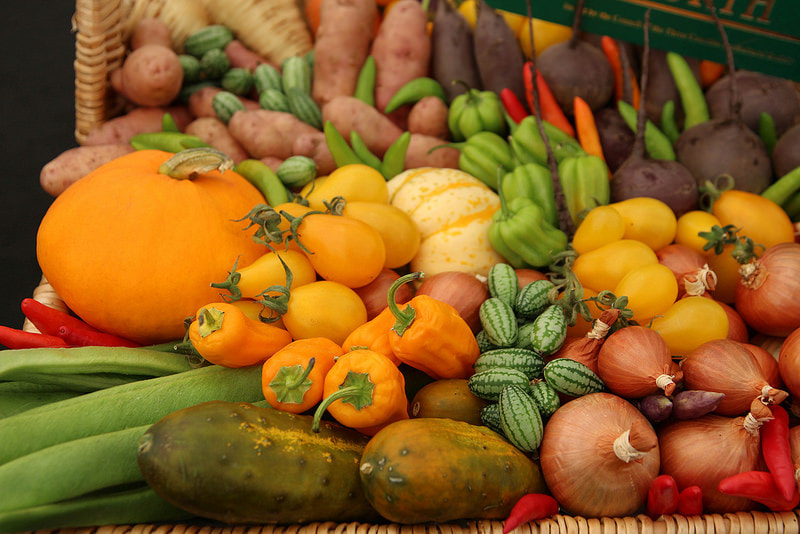 We are well and truly into January with its wealth of cold weather, sometimes blue skies and often rainy days. Heating is high and air temperatures are low, heralding the cold and flu season. But what is the difference between a cold and the flu and what can we do to avoid them and care for ourselves? When I was growing up, there was NO difference - everything was flu to my mum! But today it’s clearer - below I’ve compiled a table to show the general symptoms of each virus. Table: Cold & Flu Symptoms
A cold usually affects the upper respiratory tract leaving us with runny or blocked noses, sore throats and congested airways. These symptoms along with (some or a combination of) a fever, headache, earache and tiredness can develop over 10 to 14 days. Whereas flu is severe and immediate. Flu comes on quickly and brings with it muscle aches, a high temperature and sometimes shivering, sweating and often pure exhaustion.
Although there is no ‘cure’ for the cold or flu there is a lot that we can do to prevent them. Remember, food can be your medicine. Follow the rule of F.R.E.S.H. Fruit & Vegetables – choose a variety of colours. Rest – have the right amount of sleep (6 to 8 hours for an adult). Energy – notice your energy levels and respond to them. Seasonal – eat with the seasons, follow Nature’s rhymes. Hydration – fundamental to the body’s mechanics. F is for Fruit and Vegetables. Keep eating seasonally and colourfully. All fresh fruit and vegetables physically offer us a package of vitamins and minerals that the body knows how to utilize. By this, I mean - to breakdown, absorb and distribute to organs, muscles, blood, bones and all the cells throughout the body. In the winter months squash and pumpkins are grown locally. They are high in antioxidants (Vitamin C), are anti-inflammatory and have insulin-regulating properties. These qualities are key to staying healthy at this time of year. Other Winter favourites are kale, Brussels’ sprouts, cabbages, cauliflower and broccoli. These cruciferous vegetables are high in vitamin C, A & K, soluble fibre and contain magnesium and potassium. The deep red of beetroot indicates it’s nutrient punch. High in antioxidants and anti-inflammatory, it also has a good amount of manganese and folate (a form of Vitamin B). Don’t forget your leeks, garlic and onions. All contain antioxidants, which specifically target viruses and bacteria. Perfect for wound healing, but also in supporting the body through a cold or the flu. Like the vegetables above, they are also anti-inflammatory helping with congestion. R is for Rest. If you are sick give yourself time and space to rest and recover. Often people rush back into their routines when their bodies are asking for ‘more down time’. Preventatively, get more sleep. E is for Energy Listen to your body and respond to your energy levels. Winter is a time for ‘hibernation’. To be close to home, enjoying close family and friends. It is the natural time of physical contraction and regeneration. S is for Seasonal. Keep food as local and seasonal as possible. This is Natures way of providing the right foods for its indigenous people. (NB. With global farming and traditional crops no longer being grown in home countries, this can be tricky. Practicalities need to fit too). H is for Hydration. Hydration is key! I can’t stress this more for wellness and avoiding illness. The body uses more fluids when it is under stress; so as January deadlines loom and different emotional, physical and mental pressures show themselves, drink water. If you do catch a cold or the flu, keep your clear fluids up – water, easy broths, herbal teas and lemon and honey drinks. And lastly, reduce alcohol, cigarettes and processed food. Detox in the Spring and nurture in the Winter. 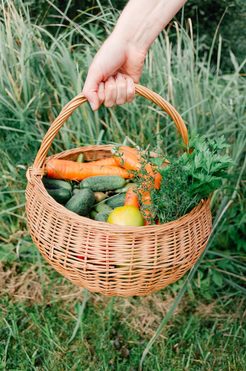 It’s the time of year, where we can use all the help we can get from the food around us. I wanted to explore three of the easiest and most common herbs and there benefits –Parsley, Rosemary and Thyme. Remember, herbs can be used culinary, as teas and tinctures and also topically. Ask me any questions that come to mind. Parsley, curly or flat leaf, packs an antioxidant punch! Antioxidants are used by the body to reduce inflammation, to fight infection and combat free radical damage. The most obvious impact is associated with the ageing process, specifically age related diseases, physical decline and soreness. Parsley is a natural diuretic and helps with water retention and bloating, it sits nicely with kidney health as this helps to flush the kidneys. Because of this, parsley can be useful to ease bladder discomfort and that associated to kidney stones and kidney inflammation. I love the use of parsley as a breath freshener. Used as a digestive aid, starting in the mouth (for its antibacterial and antiseptic oil qualities) right down to supporting bile production for better absorption through the gut. Parsley contains Vitamins A, C and K. Rosemary is one of my family’s firm favourites. It is a herb rich in antioxidants, anti-inflammatory and anti-carcinogenic qualities. This combination supports and boosts the immune system. As an antibacterial herb it can be used to treat bacterial infections and is commonly used for gut and bowel health – constipation, diarrhoea, bloating and even stomach ulcers. Research is currently underway in the use of Rosemary as a memory stimulant. It is already considered a mood-enhancing herb. To increase memory function and to extend this into treating dementia and Alzheimer’s patients has great potential. Thyme contains thymol (used in shop bought mouthwashes and vapour rubs); this antiseptic oil tackles sore throats and other oral bacteria in the mouth and throat. Traditionally, it has been used as a treatment for bronchitis. Thyme is an antispasmodic, which means it can relax the respiratory muscles. Today the German government endorses this. Before antibacterial creams, thyme oil was used on bandages as a preventive to infection. Thyme, like Rosemary is certainly a mood enhancer. Storing fresh herbs is easy - keep them cold. Stand fresh herbs, bouquet style in a glass of water with a plastic bag loosely over the top and refrigerate. If you are tight on fridge space, roll them in damp paper towel and store them in a container in the vegetable drawer. (NB: Basil should be kept at room temperature). Alternatively you can dry herbs on a paper towel in an airing cupboard or in the summer try a sunny windowsill. It is difficult to consume a lot of herbs, however to use them in cooking (as a tea, an inhalation, or a cream) is important. Not just for flavour and scent, but for what they bring us medicinally.  I was a child raised to ‘clear my plate’ - there was no leaving the table until everything was eaten. My mum was a part of the baby boom generation who grew up in a post war world of food austerity and poverty. Therefore, her mark (and my Nana’s) of a healthy baby was a fat baby! A happy toddler was a chubby toddler, a good child had a good appetite BUT … a fat adult needed to go on a diet. Many people I meet have the same story to tell. So, how to approach food and meals in a different way? Eat until you’re 80% full and then pause. This is often enough for now. Intuitively listen to your body. We should be aiming to eat to ‘80% full’, this alleviates stomach discomfort and bloating. It also gives the body time to process and use the food effectively. The Japanese have a proverb which illustrates this perfectly “eight parts of a full stomach sustain the man; the other two sustain the doctor”. Our stomachs are resilient. The stomach is very elastic in quality and stretches to accommodate food, as this passes lower into the digestive tract the stomach returns to its former size. This is its job. In fact the stomach can comfortably hold 2 cups of food or about one litre of liquid. However, by constantly overeating, the stomach muscles can stretch making this the ‘new normal’. A stretched stomach means we can consume more food (and therefore again over-consume), to continue stretching the muscle. A very slippery slope that leads to other health complications, the most obvious is weight. By eating to 80% full, we give our digestive system the space to work. It is not over burdened by food quantity. From mouth to stomach to small intestine, the average time varies, from 6 to 8 hours. From mouth to anus it is 12 to 24 hours. These timings differ person to person, by gender, exercise, metabolism and diet. A meal heavy in meat and / or processed carbohydrates takes longer than a plant based dish. Change how you eat in 4 easy steps 1. Are you actually thirsty? Hydration is key to daily life. However, the body’s thirst mechanisms are so subtle that most of us miss them if we’re not in the habit of drinking water. The brain therefore registers ‘hunger’ when actually we need a drink. 2. Are you hungry? A crazy question, but is this habitual / emotional / stress / boredom / reward eating or are you hungry? When you’re hungry, eat mindfully, it is a pleasure and for many a luxury time with family, friends or alone. 3. Serve less food. Reduce your portion sizes. For family meals, I have extra available, but I start with an 80% portion. If there’s a pudding, sometimes less than 80%, so everyone gets to enjoy the desert. 4. Eat organic. Where you can, eat organic. If the quality of your food is higher you need less quantity. Organic food is easier on the digestive system (no pesticides, antibiotics etc for the liver and gastrointestinal tract to process) and it is a richer source of protein, minerals and vitamins than non-organic. By changing my eating style to 80% full, I’ve been rewarded with more energy. Instead of a lot of energy being internalised to process and digest food, I’m harnessing it externally in my day. There’s a bounce in my step. |
AuthorPaula is an avid writer and enjoys working with food and words. Archives
August 2022
Categories |
Proudly powered by Weebly


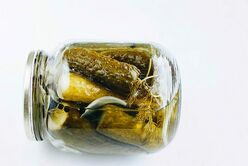
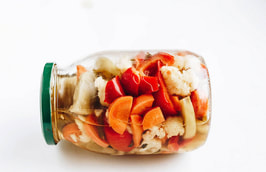
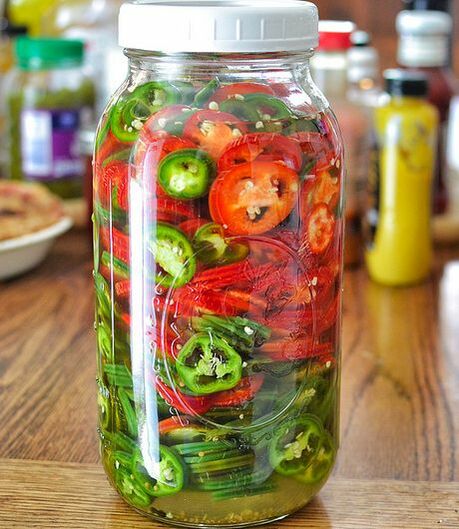
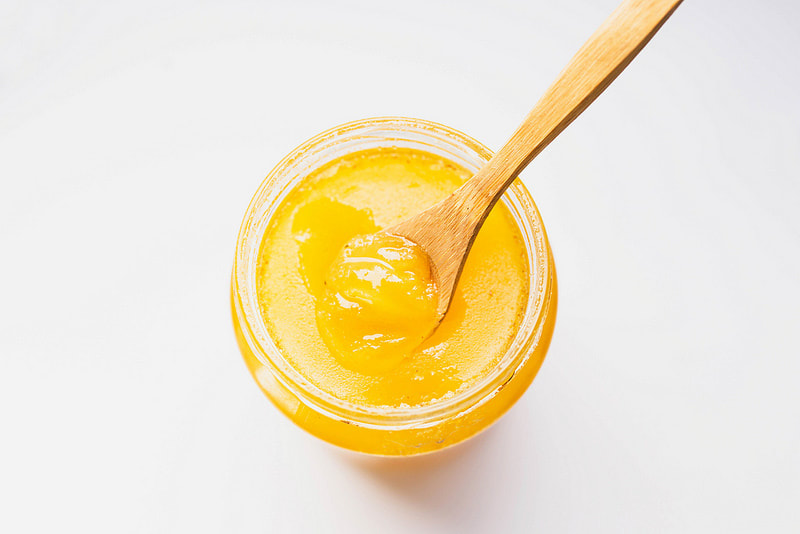

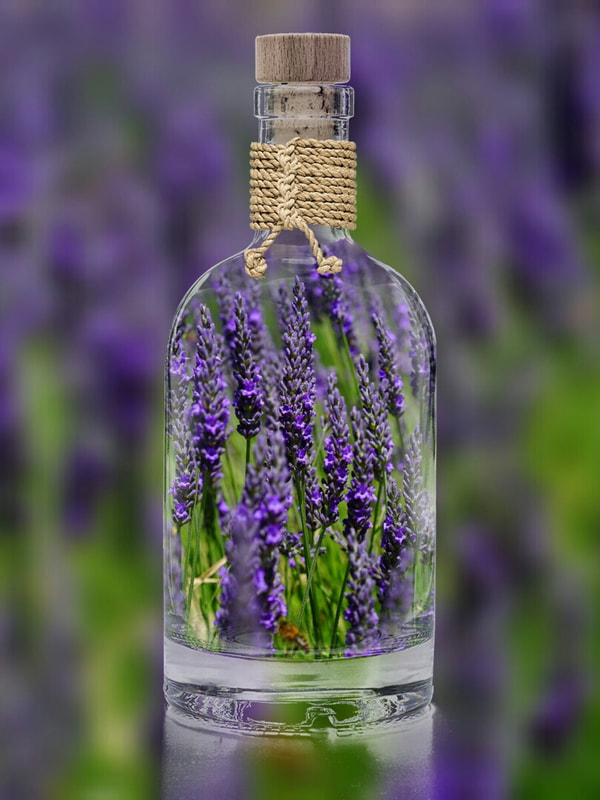

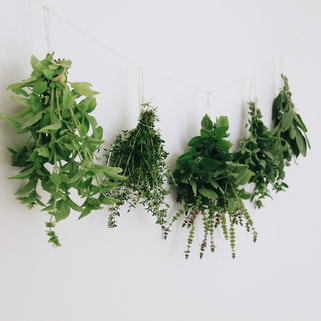

 RSS Feed
RSS Feed